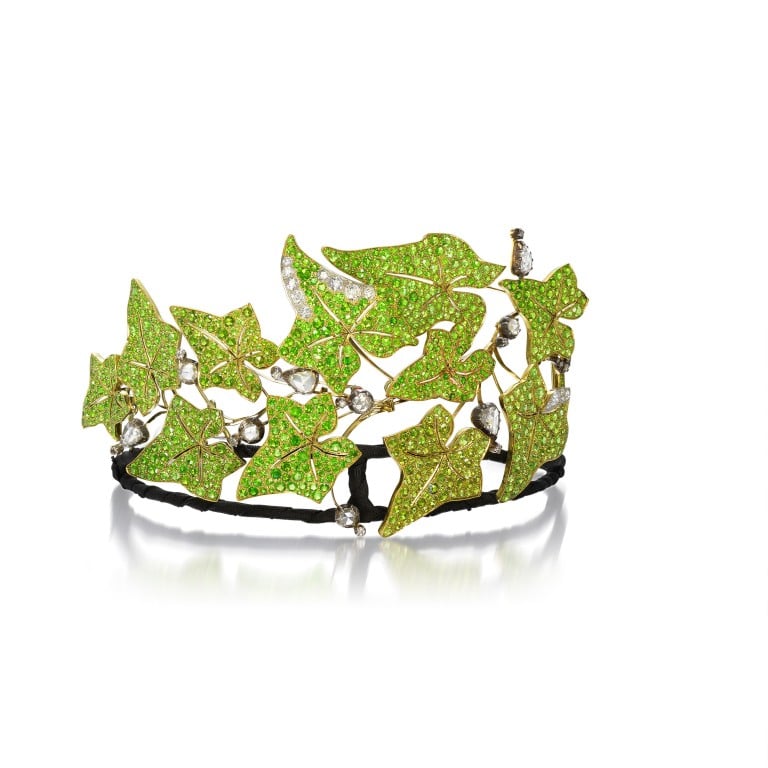Why do Queen Elizabeth and other royals love semi-precious stones? Cartier created bespoke pieces for Wallis Simpson while the British monarch wore red spinels and aquamarines

- Semi-precious stones include tourmaline, spinel, garnet, amethyst, peridot, alexandrite, topaz and tanzanite – and European royals love them
- In Asia, pieces by contemporary designers like Wallace Chan do well at auctions, fetching thousands at Christie’s and Sotheby’s
Another famous parure in the UK’s Crown Jewels is the queen’s Brazilian Aquamarines – comprising a tiara, necklace, earrings and bracelet. As gifts to mark the queen’s coronation in 1953, the president of Brazil presented her with a platinum necklace set with nine perfectly matched, large oblong aquamarine stones surrounded by diamonds, along with aquamarine earrings. Later, Brazil also gave the queen a matching aquamarine and diamond bracelet.

The parure was completed with a tiara made by crown jeweller Garrard in the 1957. The present form of the tiara is the result of meticulous redesigning to incorporate four scroll-shape motifs from an aquamarine and diamond head jewel, also a gift from Brazil in the 1960s.
In Asia, connoisseurs of rare coloured gemstones have splurged on unique pieces. At the Christie’s Hong Kong Magnificent Jewels sale in May 2017, Adrian Cheng’s suite of multi-gem jewellery was snapped up for HK$250,000 (US$32,000). It consists of a necklace, bracelet and ring of matching design. The pieces feature angular geometric fringes with large green tourmaline stones, surrounded with bursts of onyx, circular-cut rubies, sapphires and diamonds. The necklace suspends a square-shaped ruby, joined by a similarly set openwork curved band and neck chain with diamond and onyx link details.
